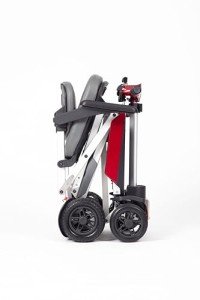Understanding Mobility Aids: Enhancing Independence and Quality of Life
As society continues to age and people progressively look for methods to keep independence, the demand for mobility aids has never ever been more pertinent. Mobility aids, which include a variety of devices created to help individuals with strolling or walking around, play a vital role in promoting mobility, boosting safety, and enhancing total lifestyle. This post will check out the different types of mobility aids, their advantages, considerations for selection, and respond to some frequently asked questions.
Kinds Of Mobility Aids
Numerous mobility aids are offered, each developed to resolve particular requirements. The following table sums up some of the most common kinds of mobility aids and their features.
| Kind Of Mobility Aid | Description | Best Suited For | Key Features |
|---|---|---|---|
| Walking sticks | A portable stick offering support and balance. | People who require minimal assistance. | Light-weight, portable, adjustable height. |
| Walkers | Four-legged frames supplying stability. | Those requiring considerable support while walking. | Foldable, some with wheels, included security functions. |
| Rollators | Wheeled walkers with a seat for resting. | People needing mobility with the alternative to rest. | Brakes, baskets for personal products, adjustable height. |
| Wheelchairs | Chairs with wheels for individuals with minimal mobility. | Those not able to walk or needing comprehensive support. | Handbook or powered choices, personalized seating. |
| Scooters | Motorized devices for bigger ranges. | Individuals with restricted endurance but requiring self-reliance. | Various sizes and designs, typically portable. |
| Crutches | Support devices positioned under the arms or lower arms. | Individuals recovering from lower limb injuries. | Adjustable, lightweight, needs upper body strength. |
| Stairlifts | Mechanical devices for moving between floorings. | Users dealing with difficulties in multi-level homes. | Customizable for various staircases, automated. |
Benefits of Mobility Aids
Mobility aids offer an array of advantages that can considerably boost the lives of individuals dealing with mobility difficulties. Some notable benefits include:
- Increased Independence: Mobility aids empower individuals to move easily without counting on others for support, therefore enhancing their self-confidence and self-esteem.
- Boosted Safety: Using mobility aids can lower the threat of falls and injuries, particularly for older adults or those with balance concerns.
- Improved Quality of Life: By assisting in mobility, people can participate in social activities, go to events, and enjoy life more totally, contributing to much better psychological and psychological health.
- Rehabilitation Support: After surgical treatment or injury, mobility aids provide required assistance and stability, assisting in recovery and rehab procedures.
- Availability: Many mobility aids are developed to be utilized both indoors and outdoors, guaranteeing that people can navigate various environments with ease.
Elements to Consider When Choosing Mobility Aids
Choosing the appropriate mobility aid needs careful consideration of a number of elements, consisting of:
| Factor | Factors to consider |
|---|---|
| User's Needs | Examine the level of mobility required; think about whether the user needs momentary or long-term support. |
| Physical Limitations | Examine the user's strength, balance, and coordination to identify the best kind of aid. |
| Setting | Think about the main environments where the help will be utilized, such as home, outdoors, or specific surfaces. |
| Weight and Portability | Guarantee that the chosen device is workable regarding mobility and storage, particularly for outside usage. |
| Spending plan | Mobility aids can be found in a variety of rates; think about insurance coverage and offered funding options. |
| Adjustability | Choose aids that can be changed for height and convenience to accommodate development or altering requirements. |
Regularly Asked Questions About Mobility Aids
1. How do I know if I require a mobility aid?
Lots of elements can signal the requirement for a mobility help, such as trouble walking or balancing, tiredness while standing, or a current surgery impacting mobility. Consulting with a healthcare specialist can supply assistance tailored to specific requirements.
2. What kinds of mobility aids are covered by insurance?
Coverage varies between insurance providers, but many provide alternatives for durable medical devices, which generally includes wheelchairs, walkers, and some kinds of walking sticks. Inspect with your insurance provider for specific coverage details.
3. Can mobility aids be used outdoors?
Yes, numerous contemporary mobility aids are designed for outdoor usage. Rollators, scooters, and some walkers are equipped with functions for stability and ease of use on different terrain.
4. How do I maintain my mobility aid?
Regular upkeep includes looking for any wear and tear, ensuring that parts such as wheels, brakes, and frames are operating correctly, and cleaning up the equipment as needed. Following the maker's standards is crucial for safety.
5. Is there a threat of ending up being depending on mobility aids?
While some users might end up being reliant on mobility aids, they are designed to promote self-reliance and mobility. Slowly using a mobility aid can improve confidence and aid keep physical strength and coordination.
Mobility aids are vital tools that empower people to conquer physical challenges, promoting independence and boosting lifestyle. By comprehending the numerous types of mobility aids available, their advantages, and essential elements for factor to consider, families and caregivers can make educated decisions that best fulfill the requirements of their loved ones. With foldable electric scooters for adults , those with mobility challenges can lead satisfying and active lives, totally free to check out the world around them.

